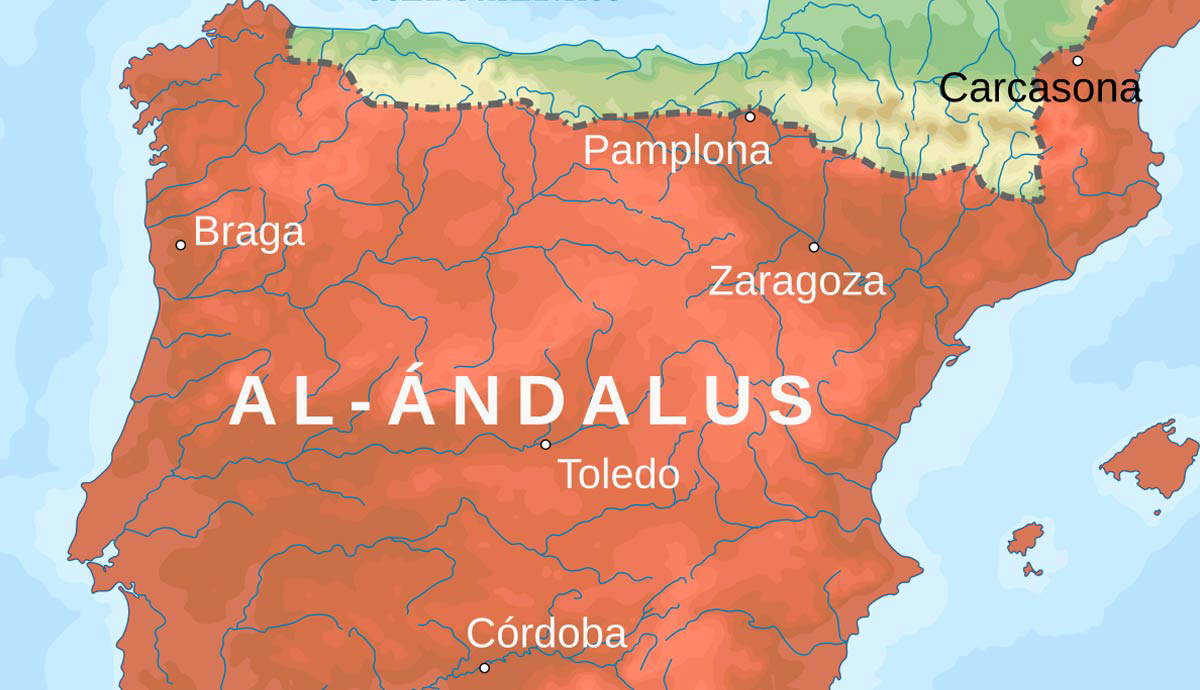The Profound Impact of the Moors on European Science and Architecture
The Muslim Berbers and Arabs established their emirate just before the Islamic Golden Age. Besides conquering and reshaping Iberia, the Moors brought ancient Greek and Roman knowledge, as well as Islams own advancements. Over time, they would fuse Muslim and European knowledge plus innovate on their own. The Moors proved to be unusually tolerant, allowing non-Muslims to interact with Muslims, helping to spread knowledge further into Europe. The result? A renaissance occurred centuries later, not before the real event.Centers of knowledge and great architecture emerged in cities such as Granada, Cordoba, and Toledo. Muslim, Christian, and Jewish scholars lived here. These scholars drew upon preserved knowledge. In turn, Muslim scholars made significant advances in astronomy, medicine, engineering, and mathematics. And of course, architecture.The Scientific Exchange14th-century copy of Al-Jabr with quadratic equations. Source: Arab AmericaWith the majority of Europe still in turmoil, travelers to Al-Andalus (Moorish Spain) felt as though they had landed on a foreign shore. In their public libraries, such as those in Cairo and Baghdad, Moorish scholars expanded upon existing ancient knowledge while developing innovative ideas. Perhaps the most critical introduction came from the use of the Arabic numeral system. This introduced the concept of zero and positional value (ones, tens, hundreds, etc.).As with an intellectual revolution, the Moorish scholars delved into various fields. Nothing seemed out of reach. In mathematics, they introduced algebra, derived from al-jabr, which allowed solving equations far beyond what Roman numerals could do. Algebra and the Arabic numerals proved to be a game-changer. For example, by the 13th century, European merchants could now calculate interest, exchange rates, and double-entry bookkeeping. The knowledge exchange between East and West had started, though, in the Moors early days.Mathematics is maybe the most well-known subject exchanged with fellow Christian or Jewish scholars. The list of scientific knowledge passed along to catalyze Europe also included trigonometry, astronomy, chemistry, agricultural sciences, and much more. As this scientific knowledge spread, scholars came to learn.Not Always a Peaceful ExchangeThe Great Mosque of Toledo/Church of Cristo de la Luz Source: WikimediaAlthough Moor, Christian, and Jewish scholars met peacefully, strife never ceased to exist. The Moors swift campaign took much of Iberia within fifty years. But the Christian campaigns, labeled The Reconquista, churned forward, especially after the 11th century. Toledo fell to Christian armies in 1085, the first major Moorish city to do so. Often, the takeovers became brutal, killing Muslim civilians and razing mosques and libraries.Vast texts from Roman, Greek, and Arabic cultures held in Toledos libraries also fell. Scholars flocked to Toledo, eager to learn. A flood of knowledge left the conquered cities, spreading across Europe.While the Moorish kingdoms boasted dozens of libraries, Europe had few. Now, however, universities sprang up across Europe, offering degrees.Not all the transmitted Arabic knowledge was theoretical in nature. Star charts and planetary models created by Islamic scholars helped European expansion. Better navigation during the Age of Exploration, in the 15th and 17th centuries, came from their star charts and planetary models. Astrolabes, improved by the Moors, became a critical tool for European explorers.Influences Shaped in StoneCadizs Moorish Revival Gran Teatro Falla (Raul Jimenez) Source: WikimediaLike the sciences, Moorish architecture influenced Europes use of stone and mortar. Additionally, the Moors introduced a new architectural vocabulary. With a history of Arab, Roman, Greek, and Byzantine styles behind them, they reimagined styles. In turn, these styles would imbue European designers.Among the features in Moorish designs were horseshoe arches (more round than Roman) for windows or doorways. Zellij tilework consisted of geometric tiles in bright colors. No imagery appeared, only patterns and symmetry.Teruel Cathedral Source: UNESCOCentral gardens, known as Riad courtyards, featured fountains and were typically divided into four quarters, reflecting a Quranic paradise. Perhaps the most famous are the ribbed domes and interwoven arches found in mosques.One direct influence was Christians reusing mosques as churches. The Great Mosque of Toledo had Christian parts added. This style became known as the Mudejar style. Muslim craftsmen at Christians behest constructed palaces, churches, and public buildings in this new style. Many would be completed or ordered well after the Reconquista ended in 1492. The Mudejar style flourished between the 13th and 16th centuries.A magnificent example of the Mudejar style is found in the Cathedral of Teruel. Built in 1157 in the Romanesque style, the Cathedrals ceiling was painted by Muslim artists. The tower, though outwardly Islamic (with an octagonal base) and featuring geometric patterns, also incorporates Gothic elements in its raised naves.The Moors profoundly shaped Europe far past their own demise. Whether in math equations or viewing historical buildings, Europe benefited as the Renaissance began.


